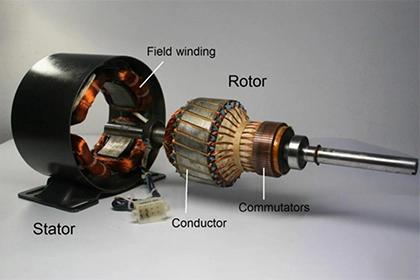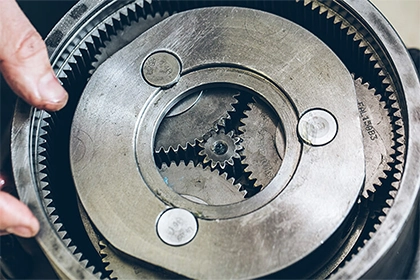
How to increase torque of dc motor using gears?
In order to increase the torque and adapt to the requirements of certain applications, gears can be used to increase the torque of the DC motor.
Direct current (DC) motors are a fundamental component in various applications, from small electronic devices to large industrial machinery. One of the critical parameters for a DC motor's performance is its torque, which is the rotational force it produces. In many instances, the intrinsic torque generated by a DC motor may not suffice for a specific application. This is where gear systems come into play, offering a viable solution to amplify torque output. This essay delves into the technical aspects of increasing the torque of a DC motor using gears, ensuring a professional and technologically sound approach.
Understanding Torque in DC Motors
Fundamental Principles of Torque
Torque in a DC motor is the product of the magnetic field strength, the current flowing through the armature, and the number of turns in the coil. It is expressed in Newton-meters (Nm) and directly influences the motor's ability to perform work. The torque generated by a motor is crucial in applications that require substantial force to move or lift objects.
Torque and Speed Trade-off
There's an inherent trade-off between torque and speed in DC motors. When torque increases, the speed at which the motor shaft rotates typically decreases, and vice versa. This inverse relationship is pivotal when considering gearing solutions, as enhancing torque through gears will affect the motor's speed output.
Gear Systems and Torque Enhancement
The Role of Gear Ratios
Gear ratios are the cornerstone of torque enhancement in gear systems. The gear ratio is defined as the ratio of the number of teeth on the output gear (the gear attached to the load) to the number of teeth on the input gear (the gear attached to the motor). By increasing the gear ratio, you can increase the torque transmitted to the load while proportionally decreasing the speed.
Types of Gears Used to Increase Torque
Various types of gears can be used to increase torque, including spur gears, planetary gears, and worm gears. Each type has its advantages and is selected based on the specific requirements of the application, such as space constraints, desired torque, and efficiency.
Design Considerations for Gearing a DC Motor
Selecting the Appropriate Gear Material
The material of the gears is a critical factor in the design. It must be strong enough to handle the increased load without failing. Common materials include steel for high-torque applications and plastics or brass for lighter duties or where noise reduction is a priority.
Calculating the Optimal Gear Ratio
To calculate the optimal gear ratio for a given application, you must consider the required output torque and the motor's characteristics. This involves understanding the motor's torque curve and how it relates to the load requirements of the application.
Ensuring Mechanical Compatibility
Mechanical compatibility includes ensuring that the gears mesh correctly and that the shafts are aligned to prevent premature wear or failure. The mounting of the gears and the housing that contains them must also be robust enough to withstand the forces generated by the increased torque.
Practical Implementation of Gearing to Increase Torque
Steps for Gear Integration
Integrating gears to a DC Motor involves several steps, from selecting the right type and size of gears to installing them properly. This may require custom-designed components and precise assembly to ensure that the gears are aligned and lubricated correctly for smooth operation.
Maintenance Considerations
Increased torque also means increased stress on the gear system. Regular maintenance is thus essential to ensure longevity and performance. This includes checking for wear, ensuring proper lubrication, and replacing any components that show signs of deterioration.
Conclusion
Gearing is an effective method to increase the torque of a DC motor, essential for applications that require more force than what the motor can provide on its own. By understanding the principles of torque, the role of gear ratios, and the appropriate design and material considerations, one can effectively implement a gear system to enhance a DC motor's torque output. Careful calculation and integration of gears, along with diligent maintenance, will ensure that the motor performs reliably in its heightened capacity. Through this meticulous approach, engineers and technicians can unlock the full potential of DC motors across a wide range of demanding applications, reinforcing the versatility and adaptability of these powerhouses of the electromechanical world.



Leave a Comment